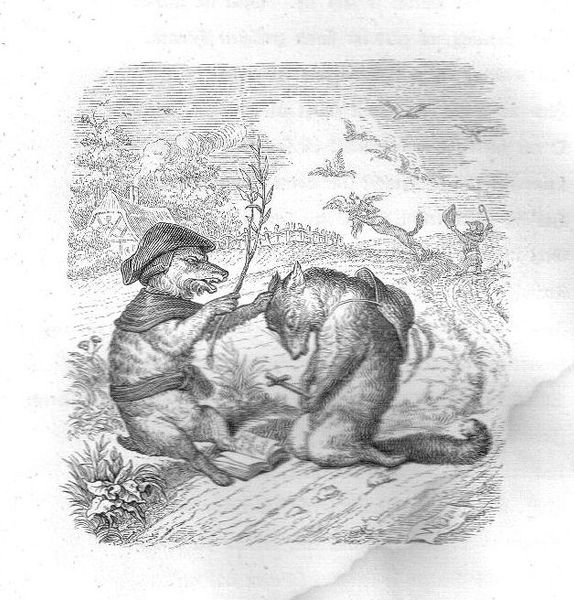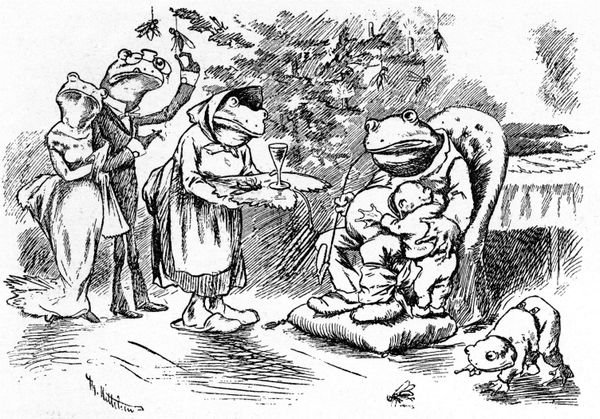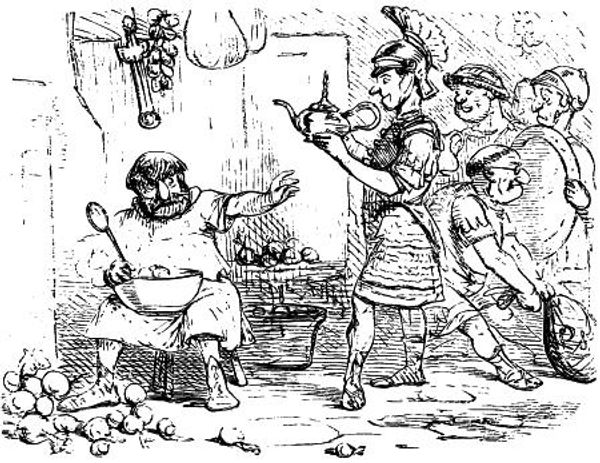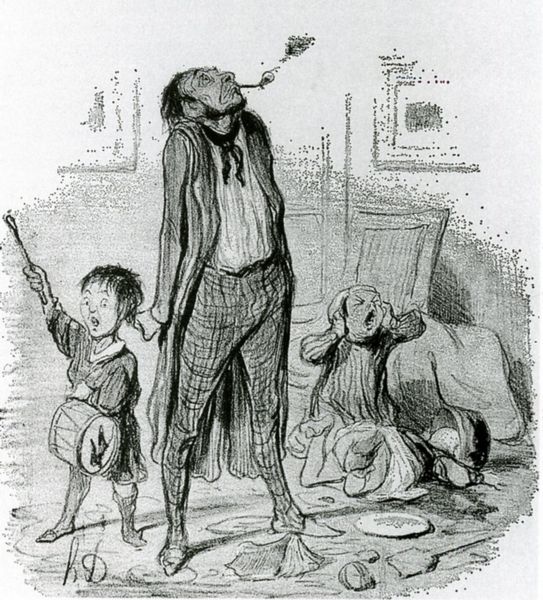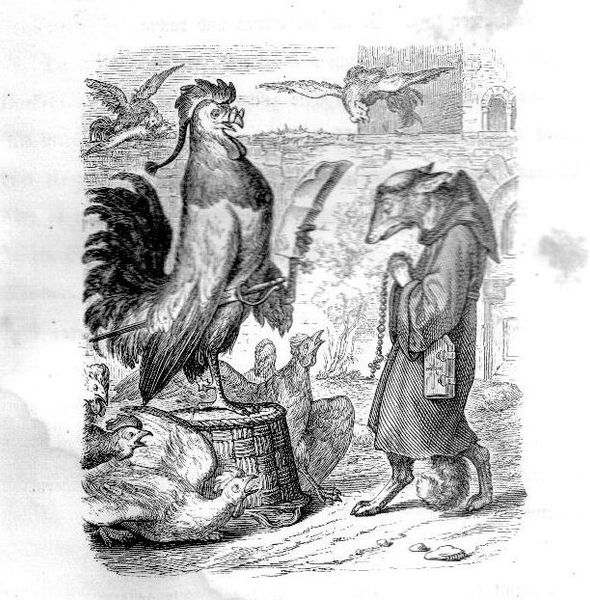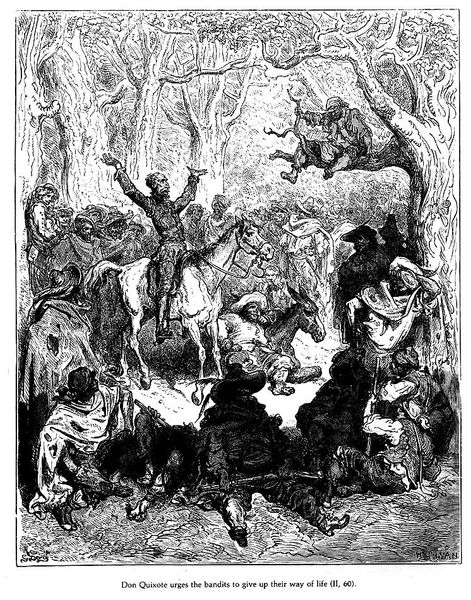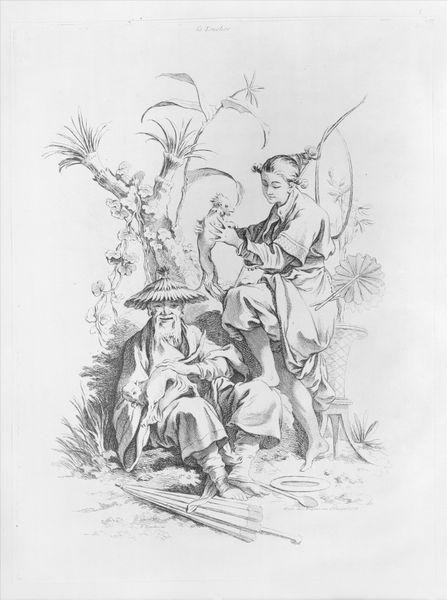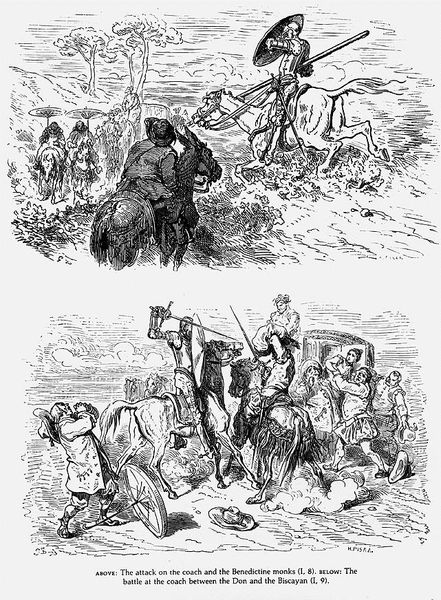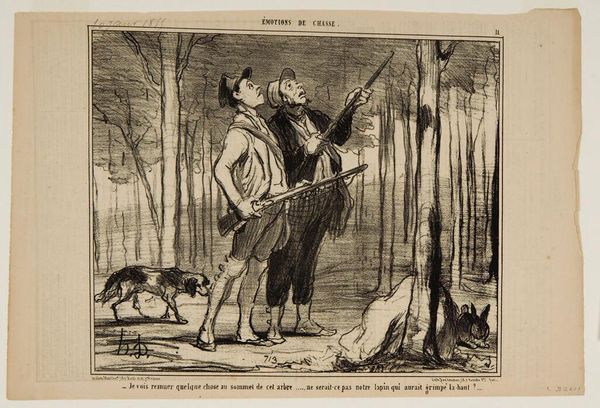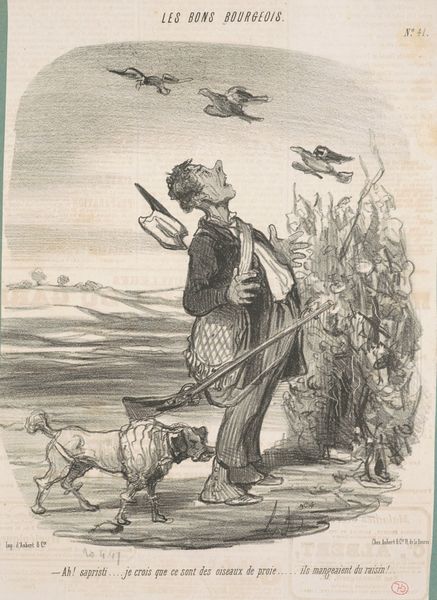
Copyright: Public domain
This is an illustration by Wilhelm von Kaulbach, likely made in the mid-19th century, using techniques of etching or engraving to create this black and white image. The density of lines gives it form and texture. What I find most compelling about this image is the way it repurposes the aesthetics of academic art for satirical purposes. The figures are rendered with considerable skill, particularly their clothing. And yet, all of this craft is put in service of a fairly vulgar joke, with power dynamics, politics, and social critique all presented. Kaulbach's choice of printmaking as a medium is also significant. Unlike painting or sculpture, prints are made to be reproduced and disseminated widely. This means that his message, whatever it may be, was intended for a broad audience. In this context, the labor involved in creating the image—the careful work of the engraver—becomes part of the artwork's meaning. It's not just about what is depicted, but also about how it was made and who it was made for. This piece encourages us to think about the social life of images and to see the hand of the artist not just as a maker of beauty, but as a commentator on the world.
Comments
No comments
Be the first to comment and join the conversation on the ultimate creative platform.
